How a Home Retreat Helps Busy People Manage Time and Save Money; How to Do It, and Why it is Necessary
Buddha Weekly: Buddhist Practices, Mindfulness, Meditation. Copyright Buddha Weekly.
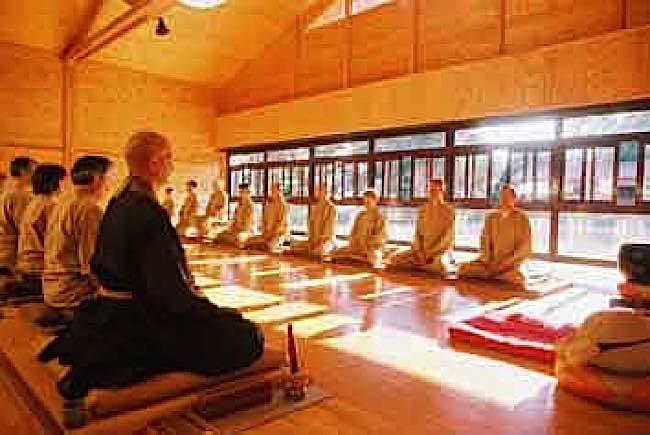
Sitting retreats are important opportunities to “still the mind”, allowing us to develop “realizations.”
There is something very special about the Buddhist Retreat. We all look forward to our first (or next) retreat, but hectic modern life makes it very difficult for many of us. Who can take six weeks or three months off work (and away from family!) to do intensive remote retreat in the mountains? How do you explain to your significant other that you need to be away from the family for a month to three months? If you are self employed, but not idly rich, it will never happen. If you are employed, you’d need a very understanding employer. Not to mention a husband or wife who is beyond very understanding.
Based on this it would seem that only the rich or retired could afford the luxury or a formal long-term retreat. Yet, it is said that even lay Buddhists should do one major retreat before they die.
From a previous feature in Buddha Weekly: “In Zen Buddhism, silent retreat is a very important practice. In Vajrayana Buddhist practice — where much of the practice is designed to help us transform “ordinary perceptions” — the extensive practice and mantra retreat is considered a must, at least once in a practitioner’s lifetime.”
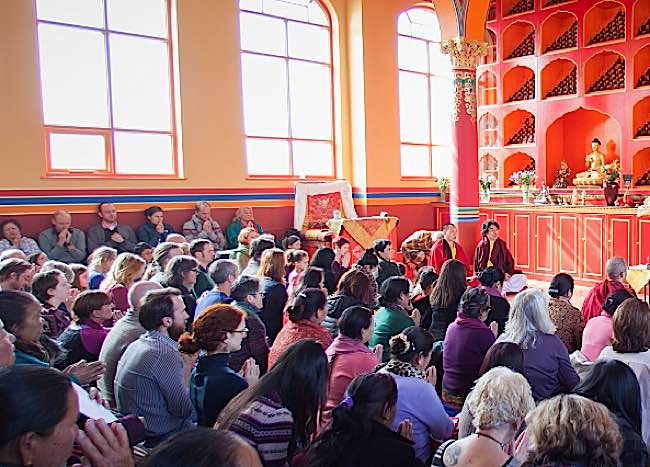
Formal teaching retreat. Nothing can replace the formal long retreat, even for lay practitioners. But formal retreat can be a once-in-a-lifetime event. For the serious student, how do we progress at home, while waiting for the precious opportunity to undertake a long retreat?
Problem is, in accordance with unpredictable impermanence, we could die anytime. If we wait until we retire, or wait until we can afford it, or wait for our families grow up (leaving us more time?) — it might be too late. And, all that stress might kill us.
There is a solution to our dilemma. Venerable Zasep Tulku Rinpoche, a teacher very in touch with Western lifestyle and needs, recommends a home working retreat. During a Vajrayogini weekend teaching, he suggested just how to do it. Before discussing the how, it’s important to discuss the “why” it’s important.
Please also see our previous feature “Buddhist Home Retreat: What the Teachers Say”>>

Monks, who renounce daily lay life, can engage in retreat whenever their teachers instruct them. Retreat has always been important in “developing realizations.” For lay practitioners we rarely have the option of three year retreats.
Why Retreat is Important
Most of the great masters — from Shakyamuni Buddha to Lama Tsongkhapa and Milarepa —developed realizations through meditation that involved withdrawing entirely from mundane life for a period of intense reflection; Shakyamuni, famously, under the Bodhi tree, Milarepa walled up in his cave, Lama Tsonkhapa performing a million mandalas while working his arm to bloody tatters (he was so poor, he used a stone as a mandala plate). In those days, often this was possible due to sponsors who supported renunciates and monks. That isn’t as likely in a modern, fast-paced world.
Still, without withdrawal from daily life for a period of intense reflection, the realizations are elusive. Some of us, the lucky ones, save holidays and money for those long three month (or even just six week) retreats. We also have to bank a lot of karma-points with our spouse and families to justify a phones-off retreat.
Home Retreat — The Need for “Time and Space”
Can’t get away from picking up the kids at school? Can’t take time off work? Can’t afford a couple thousand a week for retreat accommodations on a modern, formal retreat? Home Retreat might be the interim solution, allowing you the “time and space” needed to develop “limitless compassion and wisdom.”
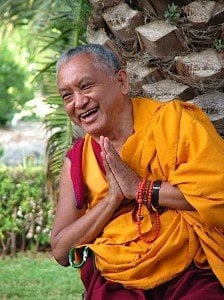
The great Kyabje Lama Zopa Rinpoche.
In a teaching in Spain in 1983, the Most Venerable Lama Thubten Yeshe said:
“Why is retreat important? In order for our spirituality, pure morality, wisdom, single-pointed concentration and insight into reality to grow, we need time and space. The normal twentieth-century environment does not give us this. It induces either distraction or sluggishness, and retreat can take us beyond both. As human beings, we have the potential for unlimited growth, for limitless compassion and wisdom, bodhicitta and the six perfections. So retreat is very important in expediting this.”
Home Retreat: A How To
Home retreat does not replace the teaching retreat or the remote retreat. Yet, according to the Venerable Zasep Rinpoche (asked by the author of this teacher during a teaching weekend), it is helpful to your practice. There are some basic guidelines that would apply to any home retreat. We should treat the home retreat the same way as we do a remote non-working retreat, meaning — when doing your practice you must do so with the full intensity of a “real retreat. When you have to go back “to work” and to the family, you basically hit a virtual pause button. On your next session (usually at least twice a day) you “unpause” and continue where you left off, trying to stay in full retreat frame of mind.
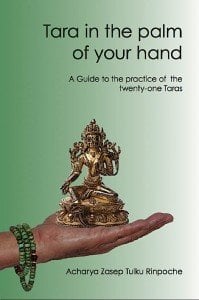
Tara in the Palm of Your Hand, a book by Venerable Zasep Tulku Rinpoche
Although Venerable Zasep Rinpoche is a teacher of the Vajrayana tradition, some core principals would probably apply to any school:
- Time — You need to commit as much time as possible each day to a home retreat, ideally at least two long sessions per day, morning and evening. If you can’t manage three-five hours a day, by giving up TV and other activities, you aren’t ready for the commitment.
- Consistency — You should practice at the same times each day, and for the same duration each day until it becomes a habit
- Goal — You should have a goal, either time goal (six hours a day for three months), or, in the case of mantra retreat, by counting mantras. For example, 3 months silent contemplation, three hours morning, three hours, night. Or, for a 100,000 mantra retreat you keep going however many days it takes, also three hours a night.
- To maintain the retreat, you can never miss a session. If you committed to three hours morning and three hours evening for three months, if you miss one day, you basically start again. Even if you are sick or tired, you try to push your way through, even half-heartedly. The key is not to miss a session.
- Separate mundane and retreat: coach family and friends to not disturb you during your regular hours of retreat.
- Even if you have spare time “left over” after your three hours of retreat (and after the kids are in bed and other obligations are met), spend your time only on Dharma activities: studying sutra, reading the Buddhist commentaries, watching Buddhist documentaries.
- Create Importance: Make Dharma retreat time your one fundamental, unchangeable component of the day. Perform family and work obligations as necessary, but use all leisure time for Dharma study or activity (in other words, no TV, no night at the movies.) The goal is to bring the feeling of retreat into as much of your day as possible during the length of your retreat.
- Format: Follow your teacher’s guidance on format. Usually Taking Refuge in the Three Jewels will begin most sessions, and Dedicating the Merit might finish each session. In Vajrayana there might be the mandatory long sadhana, followed by mantra counting. In other traditions, there might be silent meditation.
- Exercise: Even in format retreats, the participants alternate some activity with contemplation. This is important for health reasons. During retreat time, however, try to make exercise Dharma practice. For example, walking mindfulness meditation.
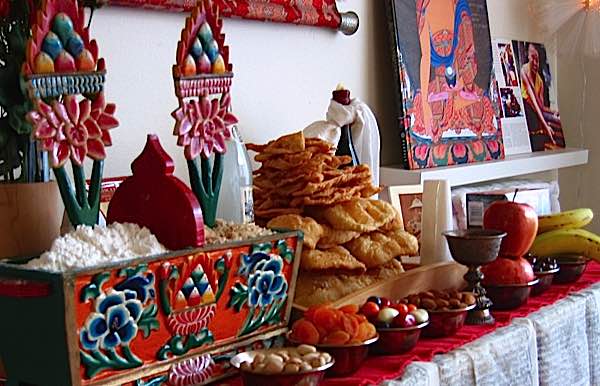
Setting up a shrine with offerings is important for Vajrayana retreat. Normally, after set up of the altar, you should not move anything (other than to renew offerings) until retreat is finished.
Recommendations specific to Vajrayana Practice
In addition to the above suggestions, a Vajrayana counting retreat might also add some additional recommendations:
- Your retreat at home should be treated as seriously as a “remote” retreat. This means you set up a cushion (seat) in one place, always returning only to that seat when you resume your retreat. You never count time or mantras performed off the cushion. It’s good to do a mindfulness walking session, or mantras while bird watching, but you don’t count either of these to your committed session.
- With Vajrayana you normally will perform the sadhana (guided meditation/visualization ) twice (one per session) plus your mantras. Normally, if there is a long version, you always use the long one.
- Normally you must set up physical offerings (to reinforce the “visualized” offerings), which would consist of torma cakes, the eight sensory offerings, and for higher tantra the inner offering.
- You normally set up an altar with an image of the meditational deity, ideally a Dharma book and offerings. The altar should not be moved until the retreat is finished.
- Usually, for Vajrayana retreats you’d undertake the practice of your “Yidam” (heart meditation emanation of Enlightenment) but if you do not have initiations, you can undertake a Shakyamuni Buddha, Green Tara or Avalokiteshvara (Chenrezig) sadhana and mantra retreat. These three do not require initiation as long as you visualize the Yidam in front of you — instead of yourself as the Yidam.
As an example, please see the suggestions below for a retreat that does not require special permissions or initiations, for Green Tara, the “activity of compassion.”
Example Retreat: Green Tara Retreat — the Mother of All Retreats
Green Tara (Drolma in Tibetan), often described as the Mother of All Buddhas, is a suitable meditational deity for any retreat and for any person. Tara is accessible to everyone. You could say, a Tara Retreat is the Mother of All Retreats. (Sadhana below)
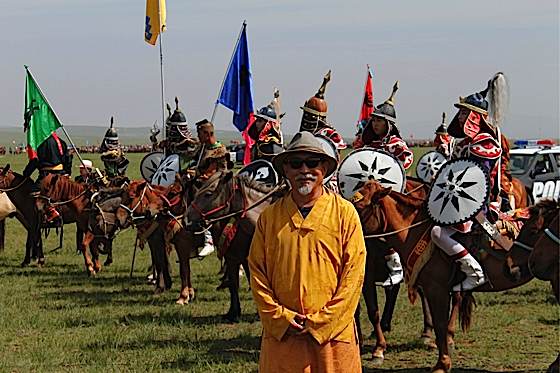
Venerable Zasep Tulku Rinpoche, here pictured in a recent trip to Mongolia. Rinpoche teaches Green Tara practice, and recently wrote a book titled “Tara in the Palm of Your Hand.”
“Tara is without a doubt the most beloved female deity in Tibetan Buddhism, revered for Her swiftness in helping those who rely on her,” writes the most Venerable Achayra Zasep Tulku Rinpoche in his recent book Tara in the Palm of Your Hand. “She has been described as a Buddha for our modern age, a sublime personification of compassion and wisdom in female form at a time when sorrow and suffering seem to be increasing everywhere.”
It is, perhaps, the fact that Tara represents enlightened activity that endears Her to Her endless followers. “Tara represents enlightened activity,” Bhikshuni Thubten Chodron writes in How to Free Your Mind: Tara the Liberator. “Tara is an emanation of bliss and emptiness… By appearing to us in this physical form of Tara, the wisdom of bliss and emptiness of all Buddhas inspires us to cultivate constructive attitudes and actions.”
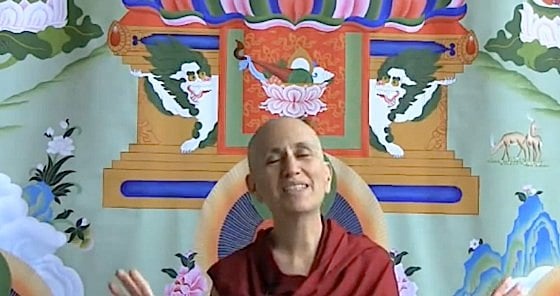
Bhikshuni Thubten Chodron introduces the practice of Tara during a retreat (Sravasti Abbey). Thubten Chodron is the author of the very popular book How to Free Your Mind: Tara the Liberator.
With Tara as our retreat inspiration, we are stimulated to right conduct, right speech and other “actions” that generate merits, and we find ourselves averse to actions that might generate negative karma. This is why, no matter how busy modern life becomes, a regular retreat in Green Tara can be a beneficial practice.
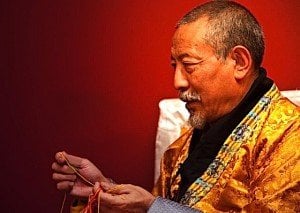
The Thirteenth Zasep Tulku, Archarya Zasep Tulku Rinpoche, an Internationally Respected Teacher, who is spiritual director of several meditation centres in North America and Australia.
For those unable to find formal retreat opportunities, a private weekend of solitary contemplation is still helpful, as is regular practice. Or, as described above, a longer retreat committing to two sessions a day. When the opportunity arises, try to attend teachings or actual retreat on Green Tara.
“Of all the Buddhas, Tara is the most accessible,” explained Venerable Zasep Tulku Rinpoche in Tara in the Palm of Your Hand. The venerable teacher points out both temporal benefits and ultimate benefits in his commentary on Tara practice. “When you practice Tara you become closer to Her and can feel Her motherly love; you feel well-loved and nurtured by the most beautiful Mother of All Buddhas.”
Tara, the Mother of All Buddhas
Tara is often called the Mother of All Buddhas of all times. This can be understood in many ways. One way to understand the affectionate title of Mama Tara is in Her role as the embodiment of Wisdom Compassion Activity. Tara is green, connoting wind and activity, because she is the “Swift One.” In the 21 Praises to Tara, She (in one of Her forms) is described as: “the Swift One, the Heroine, Whose eyes are like an instant flash of lightning…” In this way, the Swift One, The Rescuer Tara comes to the aid of those in need, like a mother protecting her children.

Green Tara’s kind face. Tara is known as Tara the Rescuer.
“Tara can be understood on many different levels,” explained Thubten Chodron. She explained Tara can be understood at three levels:
- as a person who became an Enlightened Buddha
- as a manifestation of awakened qualities
- as our own Buddha Nature (Buddha Potential) in its future fully purified and evolved form.
“Her female form represents wisdom, the essential element needed to remove the ignorance that misconstrues reality and is the root of our suffering,” wrote Thubten Chodron in How to Free Your Mind: Tara the Liberator. “Thus she is called ‘the mother of all Buddhas,’ for the wisdom realizing reality that she embodies gives birth to full enlightenment, the state of freedom from self-grasping ignorance and its attendant, self-centeredness.”
Like a Mother, Tara cares for us, and supports us. “Aspirations made in the presence of Green Tara may easily grow into results, and requests made to Her may be quickly actualized,” wrote Thubton Chodron. “We are energized to create the causes for happiness, and to eliminate interferences in our Dharma practice.
Below: Part 1 of a series of videos from Thubton Chodron on Tara (taped during a Tara Retreat).
Retreat and the Stages
“Dharma experiences come only when you put yourself in a Dharma situation,” said Lama Yeshe in a 1983 teaching in Spain. “The first stage of your spiritual growth occurs during your first retreat. The second stage happens in your second retreat; the third stage in your third…and so on. Spiritual growth is not an intellectual thing. It has to be organic. It is beyond the intellectual; it has to become your own experience.”
Retreats are, by definition, Dharma situations, with minimal distractions, and they are certainly experiential rather than intellectual. Lama Yeshe had this advice for students in retreat: ” Successful retreat demands discipline. The fundamental discipline is living ethically in pure morality. On that basis you need to follow a strict schedule and avoid all outside activity. You should not meet with other people or talk nonsense. Best, of course, is to maintain silence for the duration of your retreat and not meet people at all.”
Green Tara’s Mantra
Like Tara Herself, Her mantra is accessible to everyone. Benefits of Tara practice and Tara’s mantra arise quickly. Those who find time for daily practice, and those with empowerment, benefit even more quickly.
Nearly every Tibetan grew up with a morning recitation of Tara’s 21 Praises and Her mantra is common. Tibetan Buddhists, even those without initiation into Tara, often chant Tara’s mantra, especially when they are afraid, or in need of protection.
“I myself have had many experiences of the power of Tara, starting from when I was a boy in Tibet,” wrote Zasep Tulku Rinpoche in Tara in the Palm of Your Hand. “I, along with my attendant, were riding on a mountain path. Suddenly, we came across a mother bear with three cubs. She turned on us as if to attack. My grandmother quickly recited Tara’s mantra. Instantly the bear turned her back on us and ambled off…”
Tara’s mantra is
Om Tare Tuttare Ture Svaha
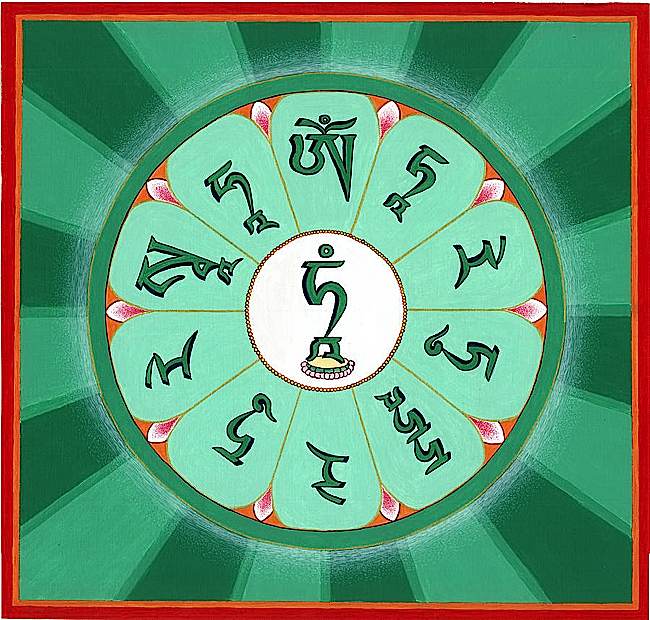
In more advanced mantra practice, Tara’s ten syllable mantra may be visualized surrounding the seed syllable Tam (shown in the centre). Surrounding the Tam, are the Tibetan syllables beginning at the top (Om) then left clockwise.
Retreat Sadhana
A sadhana is a “guided meditation” that ensures all elements of good meritorious practice are included. These are normally the “seven limbs” of practice.
Tara Visualization
The next step in visualization of Tara would be formal Vajrayana meditation—which actively uses our minds on a near epic scale, and has been proven to enhance intelligence and concentration. Research has proven the cognitive benefits of Vajrayana visualization. (Please see our feature: Science: Research Proves Vajrayana Meditation Techniques Improve Cognitive Performance.)
A guided video meditation visualization of Green Tara instructed by H.E. Zasep Rinpoche:
To benefit from visualization, while chanting the mantras, build more and more complex visualizations, beginning with Tara’s elegant beauty and important attributes, and progressively increasing the image in detail. The easiest approach is to study an image of Tara, preferably an ironically correct one—since very aspect of the visualization means something.
Your teacher, may give you a proper meditation, but if you have not yet formalized your practice you can think in these terms: Tara is a beautiful young deity, youthful, perhaps sixteen visually—certainly youthful and timeless—of emerald color. Her right hand is in the gesture of supreme generosity, hand open to give blessings, with thumb and index touching and the other three fingers outstretched. The touching fingers represent the union of Wisdom and Compassion. The three remaining fingers represent the three jewels: Buddha, Dharma and Sangha. In this hand She lightly holds the stem of an uptala flower, a blue Lotus.
Her left hand is at her heart, in the gesture of bestowing refuge in the three jewels. This mudra (hand gesture) also incorporates the gesture of protection, of fearlessness. This time Her thumb and ring finger are connecting in the Wisdom-Compassion loop. She is saying, “come, I’ll protect you.” In this hand, too, is the stem of an uptala flower. There are three blooms, one open, one half open, one just about to open, representing the Buddhas of the past, present and future.
She is adorned in the most precious ornaments, and seated in an aura of spectacular light. On Her head is a five-sided crown, depicting the five Dhani Buddhas. Above that, are ornaments, rainbow lights, wish-fulfilling gems. And surmounting all, is Her own Guru, Amitabha Buddha, the Buddha of Infinite Light, glowing red.
Her legs are Her most significant attributes. One is drawn in, showing her mastery and enlightenment. Her other is outstretched, in a gesture that appears to indicate She’s ready to leap up to our aid. She sits on a moon cushion, which arises on top of a Lotus.
In more advanced visualizations, at Her heart is her precious seed syllable, TAM (see below), radiating green light, sending out blessing energy to all beings in the universe.

The Tam syllable, seed syllable of Tara, is most often visualized at Her heart, glowing and emanating healing green light. TAM normally sits on a lotus.
Basic Practice Without Empowerment
Tara can be practiced by anyone, any time. She is all-inclusive. Although empowerments and initiations help advance our progress with Tara, none is required.
A good basic daily practice, if you are not yet being instructed by a qualified teacher, would normally include:
- Taking refuge in the Three Jewels: Buddha (Enlightened one), Dharma (Enlightened teachings) and Sangha (the community supporting the Enlightened)
- An offering: water bowls, or just a mentally visualized offering, or more elaborate if preferred (provided physical offerings do not derive from theft, greed, or any negativitiy)
- Four immeasurables: wishes for all beings to be happy, not to suffer and dwell in equanimity
- Seven-limb practice: a seven limb prayer that re-affirms a good practice of praise, offering, declaration of non-virtues, request for Tara to remain as your teacher, request that Tara teach the Dharma, and a dedication of the merit to the cause for enlightenment.

The eight sensory offerings from left to right are: water for drinking, water for washing (the feet), flowers for beauty, incense for smell, light (candles, buttlerlamps or light) for seeing, perfumes, food for eating, and sound or music for listening.
These basic practices, together, take five minutes, to which you might add the above visualization and mantra practices.
Here are some basic words/thoughts that frame the above practice:
Refuge
Until I reach enlightenment, I take refuge in the Three Jewels: the Buddhas, the Dharma and the Sangha. By the merit of practicing generosity and other perfections, may I attain Enlightement in order to benefit all beings.
Offerings
Mentally visualize seven or eight bowls of water. Or, actually fill up seven or eight bowls of water and offer them mentally. You can supplement the blessing by reciting Tara’s mantra, or, alternately, “Om Ah Hum”. For a more elaborate offering, you could add the meditation in our feature, “Water Bowl Offerings as an Antidote to Attachment”, where the bowls are visualized as the eight traditional sense offerings: water for drinking, water for washing, flowers for the eye senses, incense for the smell sense, butter lamps for illumination, perfume, food for the taste sense, and music for the sound sense. More here>>
Four Immeasurables
May all beings have happiness and its causes,
May they never have suffering or its causes.
May they constantly dwell in joy transcending sorrow;
May they dwell in equal love for both near and far.
Seven Limbs
To You Venerable Arya Tara, with my body, speech and mind, I respectfully prostrate.
I offer flowers, incense, butter lamps, perfume, food, music and a vast collection of offerings, both actually set out and emanated through wisdom and imagination.
I declare all my non-virtuous acts since beginningless time.
I rejoice in the virtuous merit accumulated by Holy and ordinary beings.
I request You turn the wheel of Dharma.
I beseech You to remain until samsara ends. Please, with your boundless compassion, look upon all beings drowning in the ocean of suffering.
May whatever merit I have accumulated be transformed into the cause for Enlightenment so that I may help all sentient beings.
Mantra
Visualize Tara as described above — in front of you if you do not have initiation — and then focus mindfully on the spoken mantra, repeating it in a low voice, over and over. For a normal practice you might repeat 108 times. For a retreat, your goal is normally 100,000 total, in three months or so in a home retreat format (for example).
Om Tare Tuttare Ture Svaha
Pronounced
Ohm Tah-ray Tew-Tah-ray Tew-rey Svah-ha.
In Tibetan:
Om Tare Tuttare Ture Soha
Final Dedication
If you have a formal practice from a teacher there will be more steps. Otherwise, close off with the all-important final dedication:
I dedicate the merit of this practice to the cause for enlightenment, for the benefit of all beings.
21 Praises
Optionally, include the 21 Praises to Tara. Around the world, many people begin and end their day with Tara’s twenty-one praises. This practice has been credited with many benefits, including protection from harm, prosperity, and swift progress on the path of enlightenment.
It can be beneficial to chant this in the world’s oldest known language—Sanskrit. The nuances of this practice, the originating sounds, is similar to mantra practice. In Sanskrit:

Tankha depicted Mother Tara and the 21 Taras.
Om namah spukasam namah Taraye mi Tara
1 Namas Tare Ture vire
kshanair dyuti nibhekshane
trailokya nat ha vaktrabja
vikasat kesharobhave
2 Namah shata sharac chandra
sampurna patalanane
Tara sahasra nikara
prahasat kira noj jvale
3 Namah kanaka nilabja
pani padma vibhu shite
dana virya tapah shanti
titik sha dhyana gochare
4 Namas tat hagatosh nisha
vijayananta charini
ashesha paramita prapta
jina putra nishevite
5 Namas Tuttara Hum kara
puritasha dig antare
sapta loka kramakranti
asheshak arshanak shame
6 Namah shakranala Brahma
marud vishvesh varachite
bhuta vetala gand harva
gana yaksha puras krte
7 Namas trad iti phat kara
para yantra pramardani
praty alid ha pada nyase
shik hi jvalakulek shane
8 Namas Ture maha ghore
mara vira vinashani
bhrku ti krta vaktrabja
sarva shatrum nishudani
9 Namas tri ratna mudranka
hrdyanguli vibhushite
bhu shitashesha dik chakra
nikara sva Karakule
10 Namah pramudita topa
muku ta kshipta malini
hasat prahasat Tuttare
mara loka vashamkari
11 Namah samanta bhu pala
patalakarshana kshame
chalat bhrku ti hum kara
sarvapada vimoch ani
12 Namah shikhanda kandendu
muku tabha ranojjvale
Amitabha jata bhara
bhasvare kirana dhruve
13 Namah kalpanta hutabhug
jvala malan Tara sthite
alidha muditabandha
ripu chakra vinashani
14 Namah kara talaghata
charana hata bhu tale
bhrkuti krta Hum kara
sapta patala bhedini
15 Namah shive shubhe shante
shanta nirvana gochare
svaha pranava samyukte
maha papaka na shani
16 Namah pramudi tabandha
ripu gatra vabhedini
dashakshara pada nyashe
vidya Hum kara dipite
17 Namas Ture pada ghata
Hum karakara bijite
meru mandara kailasa
bhuvana traya chalini
18 Namah sura sarakara
harinika karast hite
Tara dvir ukta Phat kara
ashesha visha nashani
19 Namah sura ganadh yaksha
sura kimnara sevite
abandha mudita bhoga
kali duhs vapna nashani
20 Namah chandrarka sampurna
nayana dyuti bhas vare
hara dvir ukta Tuttare
vishama jvara nashani
21 Namas tri tattva vinyasa
shiva shakti saman vite
graha vetala yakshaugha
nashani pravare Ture
21 Praises to Tara in English
The praises do lose some of the “mystery” and intensity and sheer sound-power in English, but the intention and praise is maintained. Many people chant the praise in English:
1 Homage to you, Tara, the swift heroine,
Whose eyes are like an instant flash of lightning,
Whose water-born face arises from the blooming lotus
Of Avalokiteshvara, protector of the three worlds.
2 Homage to you, Tara, whose face is like
One hundred full autumn moons gathered together,
Blazing with the expanding light
Of a thousand stars assembled.
3 Homage to you, Tara, born from a golden-blue lotus,
Whose hands are beautifully adorned with lotus flowers,
You who are the embodiment of giving, joyous effort, asceticism,
Pacification, patience, concentration, and all objects of practice.
4 Homage to you, Tara, the crown pinnacle of those thus gone,
Whose deeds overcome infinite evils,
Who have attained transcendent perfections without exception,
And upon whom the sons of the Victorious Ones rely.
5 Homage to you, Tara, who with the letters TUTTARA and HUM
Fill the (realms of) desire, direction, and space,
Whose feet trample on the seven worlds,
And who are able to draw all beings to you.
6 Homage to you, Tara, venerated by Indra,
Agni, Brahma, Vayu, and Ishvara,
And praised by the assembly of spirits,
raised corpses, Gandharvas, and all yakshas.
7 Homage to you, Tara, whose TRAT and PHAT
Destroy entirely the magical wheels of others.
With your right leg bent and left outstretched and pressing,
You burn intensely within a whirl of fire.
8 Homage to you, Tara, the great fearful one,
Whose letter TURE destroys the mighty demons completely,
Who with a wrathful expression on your water-born face
Slay all enemies without an exception.
9 Homage to you, Tara, whose fingers adorn your heart
With the gesture of the sublime precious three;
Adorned with a wheel striking all directions without exception
With the totality of your own rays of light.
10 Homage to you, Tara, whose radiant crown ornament,
Joyful and magnificent, extends a garland of light,
And who, by your laughter of TUTTARA,
Conquer the demons and all of the worlds.
11 Homage to you, Tara, who are able to invoke
The entire assembly of local protectors,
Whose wrathful expression fiercely shakes,
Rescuing the impoverished through the letter HUM.
12 Homage to you, Tara, whose crown is adorned
With the crescent moon, wearing ornaments exceedingly bright;
From your hair knot the buddha Amitabha
Radiates eternally with great beams of light.
13 Homage to you, Tara, who dwell within a blazing garland
That resembles the fire at the end of this world age;
Surrounded by joy, you sit with your right leg extended
And left withdrawn, completely destroying all the masses of enemies.
14 Homage to you, Tara, with hand on the ground by your side,
Pressing your heel and stamping your foot on the earth;
With a wrathful glance from your eyes you subdue
All seven levels through the syllable HUM.
15 Homage to you, Tara, O happy, virtuous, and peaceful one,
The very object of practice, passed beyond sorrow.
You are perfectly endowed with SOHA and OM,
Overcoming completely all the great evils.
16 Homage to you, Tara, surrounded by the joyous ones,
You completely subdue the bodies of all enemies;
Your speech is adorned with the ten syllables,
And you rescue all through the knowledge-letter HUM.
17 Homage to you, Tara, stamping your feet and proclaiming TURE.
Your seed-syllable itself in the aspect of HUM
Causes Meru, Mandhara, and the Vindhya mountains
And all the three worlds to tremble and shake.
18 Homage to you, Tara, who hold in your hand
The hare-marked moon like the celestial ocean.
By uttering TARA twice and the letter PHAT
You dispel all poisons without an exception.
19 Homage to you, Tara, upon whom the kings of the assembled gods,
The gods themselves, and all kinnaras rely;
Whose magnificent armor gives joy to all,
You who dispel all disputes and bad dreams.
20 Homage to you, Tara, whose two eyes – the sun and the moon –
Radiate an excellent, illuminating light;
By uttering HARA twice and TUTTARA,
You dispel all violent epidemic disease.
21 Homage to you, Tara, adorned by the three suchnesses,
Perfectly endowed with the power of serenity,
You who destroy the host of evil spirits, raised corpses, and yakshas,
O TURE, most excellent and sublime!
The post How a Home Retreat Helps Busy People Manage Time and Save Money; How to Do It, and Why it is Necessary appeared first on Buddha Weekly: Buddhist Practices, Mindfulness, Meditation.
from Buddha Weekly: Buddhist Practices, Mindfulness, Meditation https://ift.tt/2KEpv6P


Post a Comment